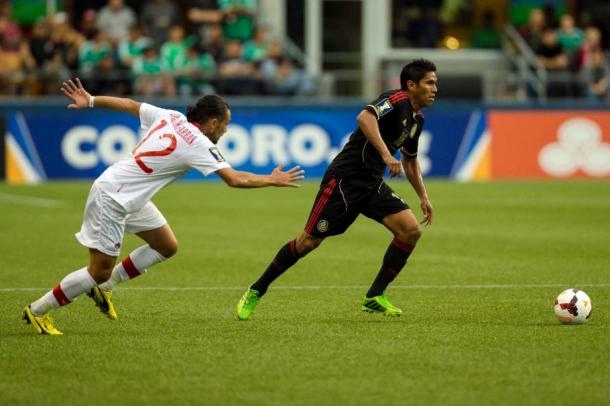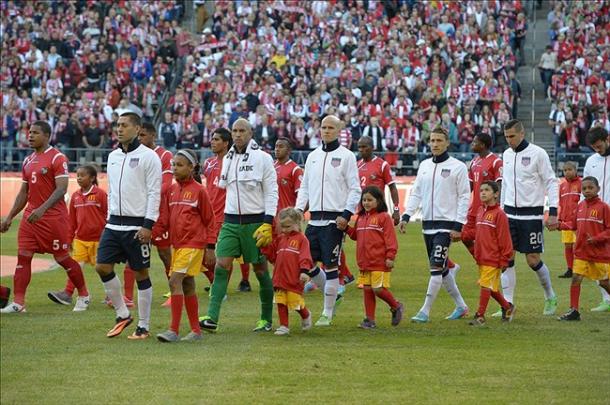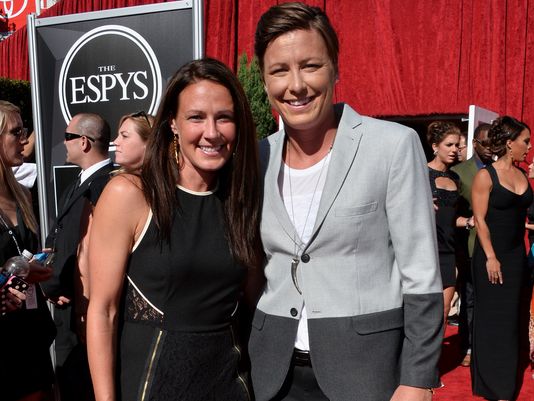The year 2015 is almost done and over with and as we head into 2016, there are many things in the sports world that need to change. There is not enough time in this world to go over every single thing that needs to change, but one of the most important things has to deal with women’s soccer in America and the world in general.
For any diehard soccer fan, or even an occasional soccer fan, the FIFA World Cup is the big time. It’s the time of the year that fans get to see their country’s best compete against another country’s best. It’s just another time for you to be proud of your country and what they accomplish.
As a fan of the United States Women’s national team, you are filled with pride knowing that your team recently won the 2015 FIFA Women’s World Cup when they beat the reigning World Cup Champions, Japan 5-2. This is where there some of the, for the lack of a better word, sexism comes from in FIFA.

All of the men’s teams across the world, especially in the United States, require that the stadium has real grass to play their World Cup qualifying matches or the World Cup itself. During the last Women’s World Cup, FIFA said it was okay for the women to play on turf. That is where the biggest problem lies.
Why is it okay for the women to play on turf, but not the men? Have the men played on turf in the past? Of course they have. Were they happy? No, but it was required and they did it anyway. Granted this was for lesser tournaments such as the 2013 CONCACAF Gold Cup. A few group stage matches were played at CenturyLink Field in Seattle, WA and the field in Seattle has turf, not grass. Panama, Martinique, Mexico, Canada, Costa Rica, Cuba, Belize and the United States all played on turf. Granted Costa Rica, Cuba, Belize and the United States all played at Jeld-Wen Field, now Providence Park, in Portland which has better turf than Seattle.
When it comes to World Cup qualifying matches, the USMNT requires that the field they play on is grass. When the United States came to Seattle in June of 2013 to play Panama in final round of qualifying, grass was laid on top of turf at CenturyLink. It’s not the best option as the ground is usually uneven and the seams in the grass don’t always mesh well. It causes the ball not to roll smoothly and it takes time for the players to adjust.

Why is it okay for the women to play on turf, but not the men?
It was announce prior to the 2015 FIFA Women’s World Cup that all the matches would be played on turf, not grass. Well, this caused uproar in the soccer community and for good reason. It even caused some prominent women’s players to file a lawsuit against FIFA. The reason for the lawsuit was because it was considered gender discrimination and against Canadian law. In the end, the lawsuit was eventually dropped.
The main issue in regards to playing on turf was that it causes more injuries and all the men’s World Cups have been played on grass since 1930. It also impacts how the game is played and, as mentioned above, how the ball rolls on turf.
Attorney Hampton Dellinger had this to say; "It is a drop in the bucket in terms of FIFA's coffers, Canada is one of the richest nations on earth. The gifted athletes we represent are determined not to have the sport they love be belittled on their watch. Getting an equal playing field at the World Cup is a fight female players should not have to wage but one from which they do not shrink. In the end, we trust that fairness and equality will prevail over sexism and stubbornness."
The 2015 FIFA Women’s World Cup was being held in only six venues and, according to Dellinger, would only cost $2-3 million to install grass in those six venues.
So why didn’t FIFA give the go ahead to have grass installed at these six venues? Who knows in all honesty? Maybe they just don’t care that much about women’s soccer which is a crying shame. Hell, Sepp Blatter didn’t even know who Alex Morgan was. For someone to not know who Alex Morgan is, especially as the head of FIFA, is a downright shame.

Morgan was being honored as one of the top three women’s players in the world when she was named as a finalist for the Ballon d’Or. "I have experienced sexism multiple times, and I'm sure I will a lot more," she said. "I feel like I'm fighting for female athletes. At the FIFA World Player of the Year event, FIFA executives and FIFA president Sepp Blatter didn't know who I was. And I was being honored as top three in the world. That was pretty shocking."
Blatter is also the one that suggested women “should wear tighter shorts” to increase popularity. Yeah, that’s the guy that should be in charge of FIFA (rolls eyes).
Another issue is that the women get paid a lot less money than the men. Let’s look at the last two FIFA World Cups. In 2014 the winner of the World Cup, Germany, split $35 million between the players on the roster. That is up $5 million dollars compared to what the winners received in 2010 FIFA World Cup. Just for participating in the tournament in 2014, all 32 teams received $1.5 million each. Altogether, FIFA paid out roughly $576 million dollars for the 2014 Men’s World Cup.
The women on the other hand only received $2 million to split between the team. Each participating country, 24, received $200,000 each. In all, $15 million dollars was paid out by FIFA to 24 teams. The runner-ups in the 2014 FIFA Men’s World Cup, Argentina, receive $25 million for LOSING the game. The women’s runner-up, Japan, received $1.4 million.
It would be naïve to say that women’s sports bring in as much money as the men’s do. Maybe a better way of doing would be to give the participants a percentage of the money made while the World Cup was being hosted.

In the end, it is horrible that in 2015, almost 2016, that women in soccer don’t have the same rights as men do. Women’s soccer is growing more and more every single year in America and across the world. They should have same opportunities as the men do at every single tournament and even when they play their domestic league matches. Why should they have to worry about far worse injuries by playing on turf? Yes, injuries can happen at any time and on any surface regardless if it is grass or turf; however turf causes far more injuries than grass.
We all know that it won’t happen overnight, but it should be a requirement that all women’s matches, at the very least FIFA sanctioned tournaments, should be played on grass. Maybe by the time the 2019 FIFA Women’s World Cup rolls around in France, all the matches will be played on grass, not turf. Maybe by 2019 we will also see another increase in pay for the participants in the Women’s World Cup.
It is the 21st century after all. It’s time for FIFA to catch up to the rest of the world.






































